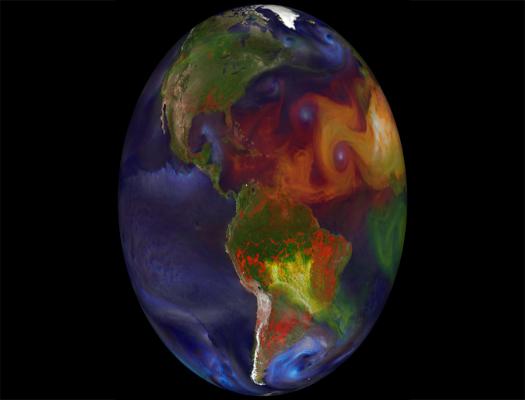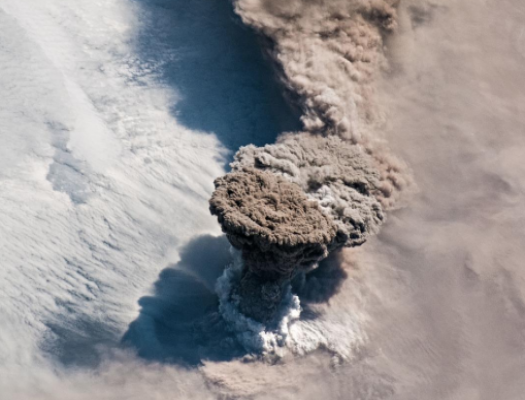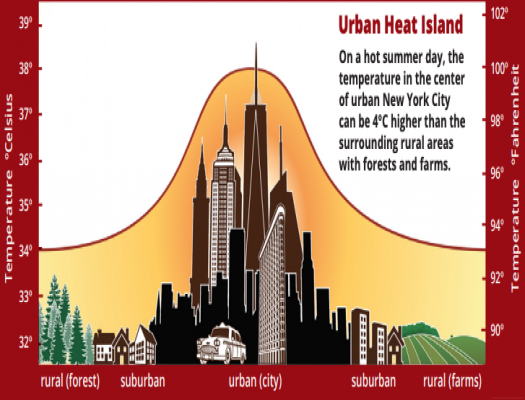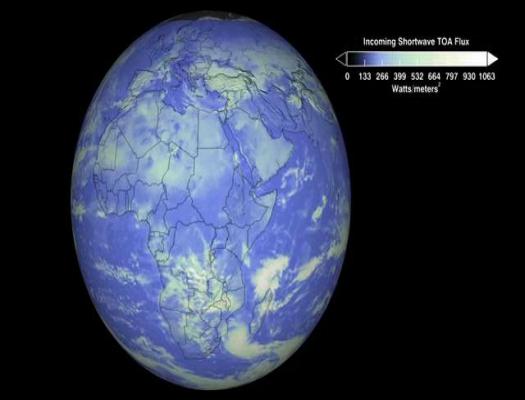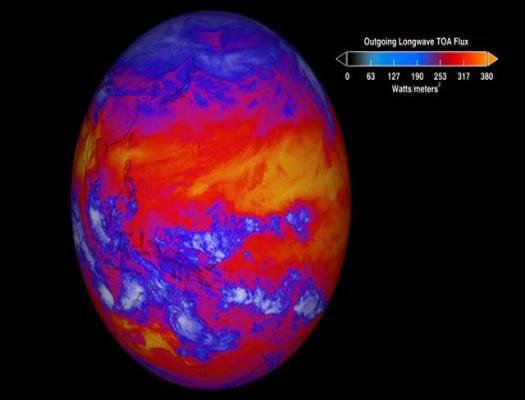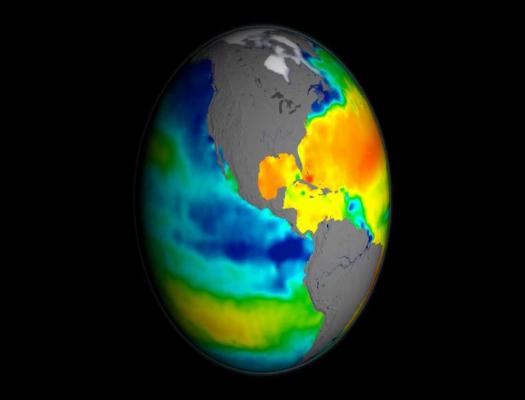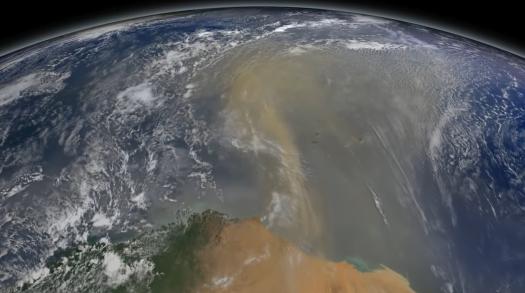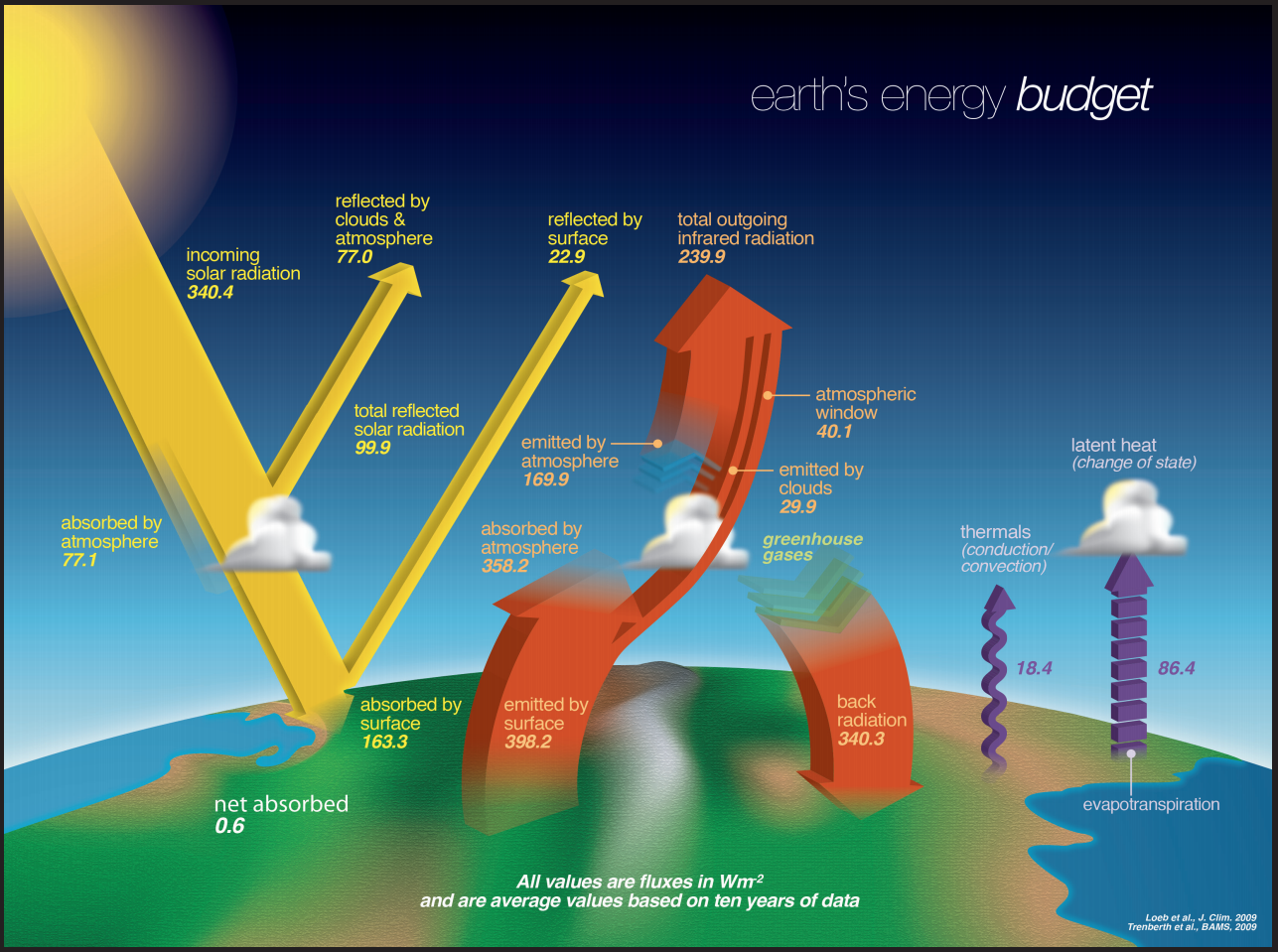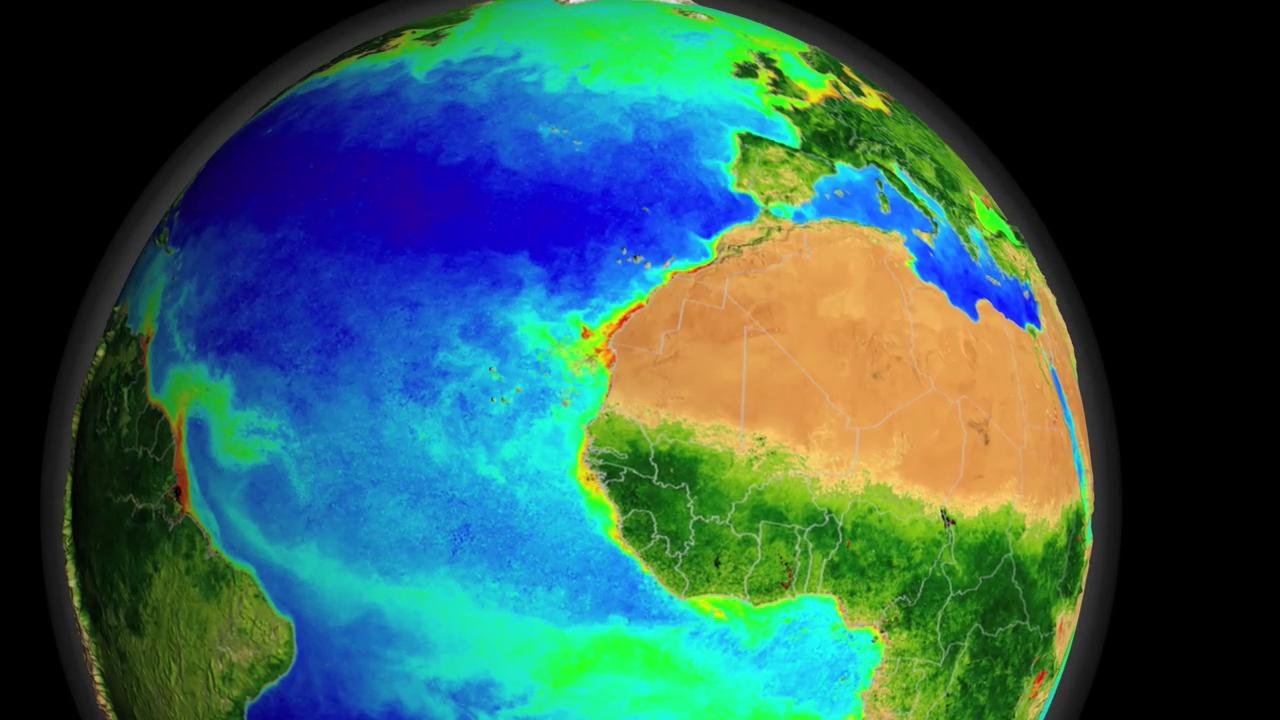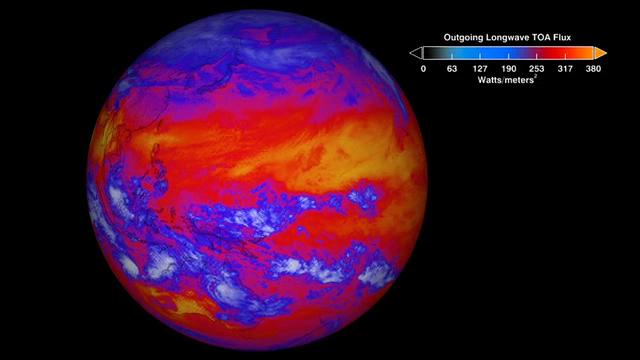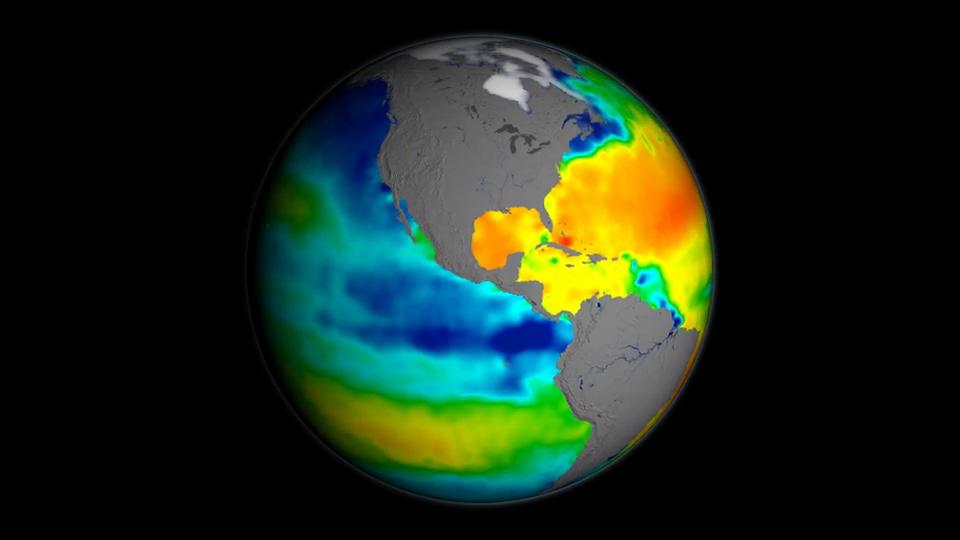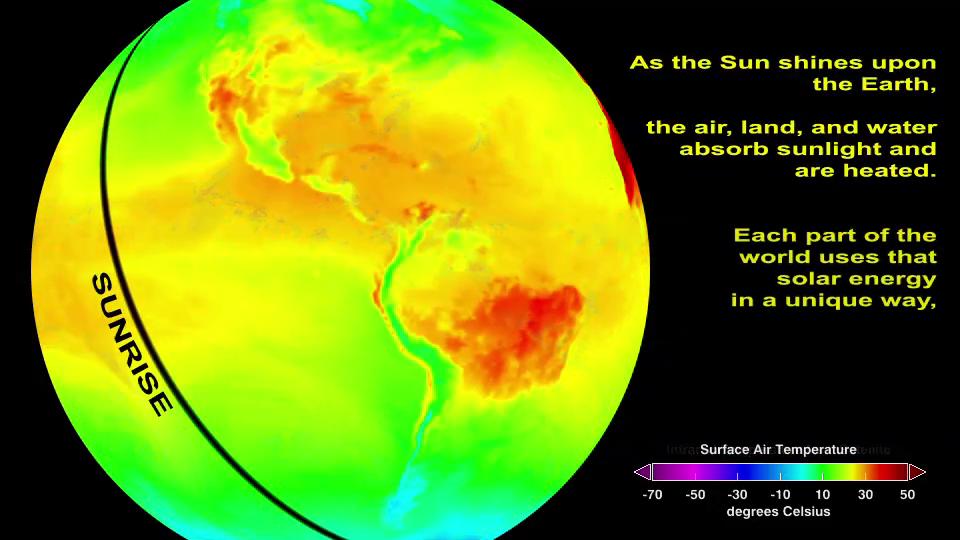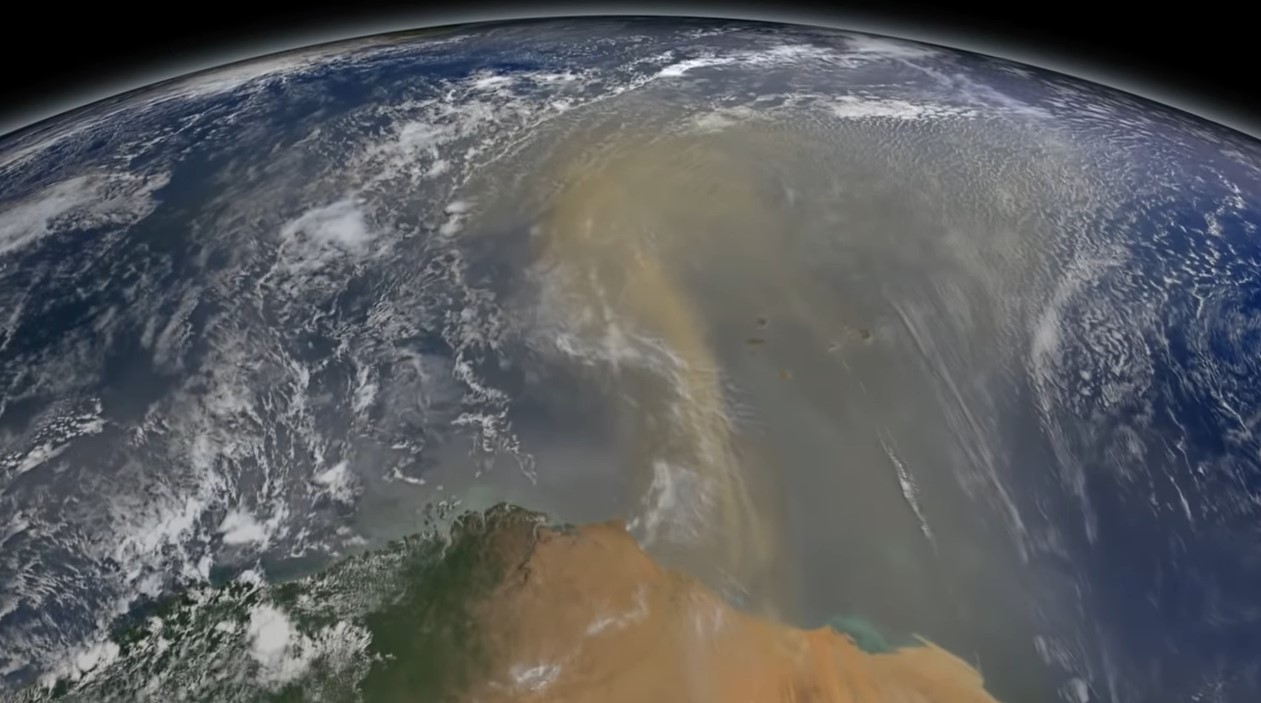This mini lesson focuses on Earth's Energy Budget and the surface effects that occur in Central Australia. Students review a line graph depicting net radiation in Central Australia related to a multiyear drought from 2002 - 2009 and answer the questions.

loading Earth as a System...
Featured Maps, Graphs, and Data
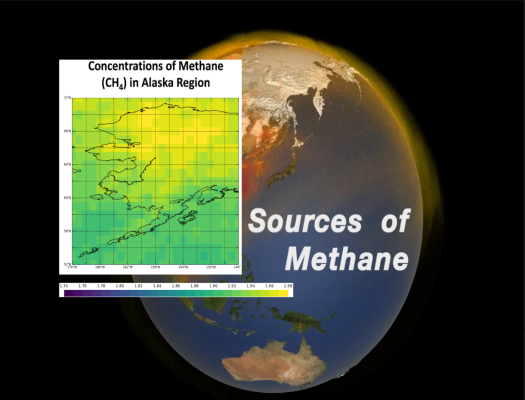
Atmospheric Methane
This mini-lesson may be used to support student understanding of a commonly used model of Earth’s energy budget and clarify terminology used within the context of that model.
,Teachers, these mini lessons/student activities are perfect "warm up" tasks that can be used as a hook, bell ringer, exit slip, etc. They take less than a class period to complete.

Analyzing Cloud Effects on Earth’s Energy Budget
Teachers, these mini lessons/student activities are perfect "warm up" tasks that can be used as a hook, bell ringer, exit slip, etc. They take less than a class period to complete.

Earth System Energy Travels
Teachers, these mini lessons/student activities are perfect "warm up" tasks that can be used as a hook, bell ringer, exit slip, etc. They take less than a class period to complete.

Earth's Heating Imbalances
Teachers, these mini lessons/student activities are perfect "warm up" tasks that can be used as a hook, bell ringer, exit slip, etc. They take less than a class period to complete.
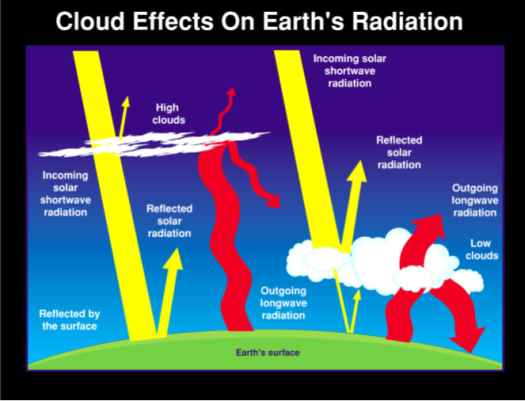
Examining a Simplified Model of Cloud Effects on Earth’s Energy Budget
Teachers, these mini lessons/student activities are perfect "warm up" tasks that can be used as a hook, bell ringer, exit slip, etc. They take less than a class period to complete.

Clouds & Earth's Climate with Dr. Patrick Taylor Video
Teachers, these mini lessons/student activities are perfect "warm up" tasks that can be used as a hook, bell ringer, exit slip, etc. They take less than a class period to complete.
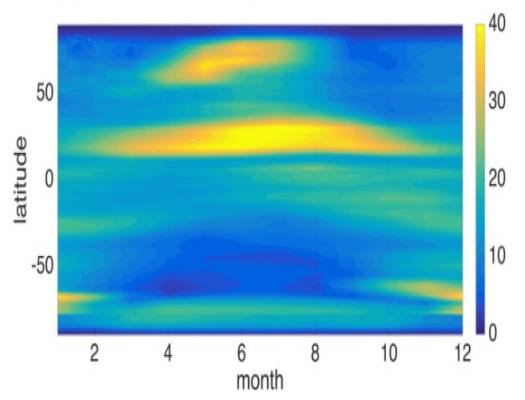
Analyzing Earth’s Energy Imbalance by Latitude and Month
Teachers, these mini lessons/student activities are perfect "warm up" tasks that can be used as a hook, bell ringer, exit slip, etc. They take less than a class period to complete.
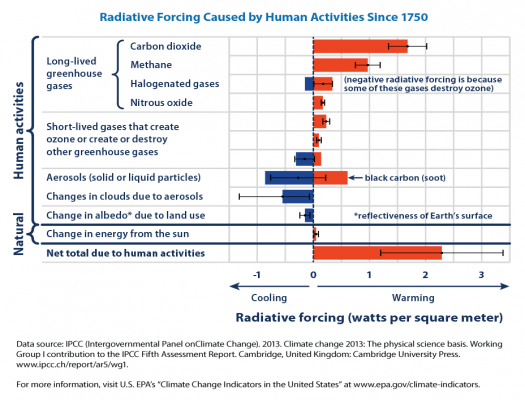
Evaluating Natural and Human Activities Effects on Earth's Climate
Teachers, these mini lessons/student activities are perfect "warm up" tasks that can be used as a hook, bell ringer, exit slip, etc. They take less than a class period to complete.
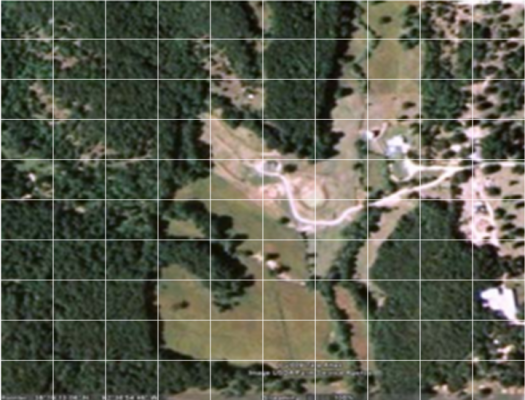
Carbon Dioxide Production and Sequestration
Teachers, these mini lessons/student activities are perfect "warm up" tasks that can be used as a hook, bell ringer, exit slip, etc. They take less than a class period to complete.
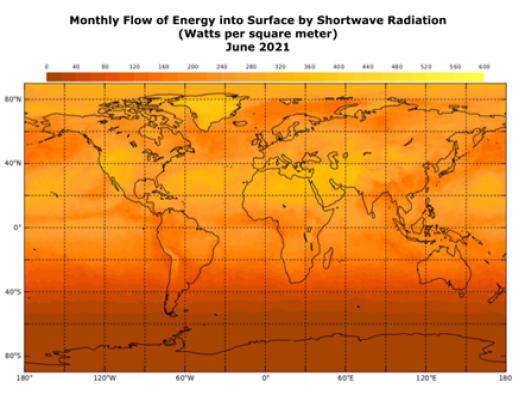
Correlating Shortwave Radiation and Cloud Coverage
Teachers, these mini lessons/student activities are perfect "warm up" tasks that can be used as a hook, bell ringer, exit slip, etc. They take less than a class period to complete.
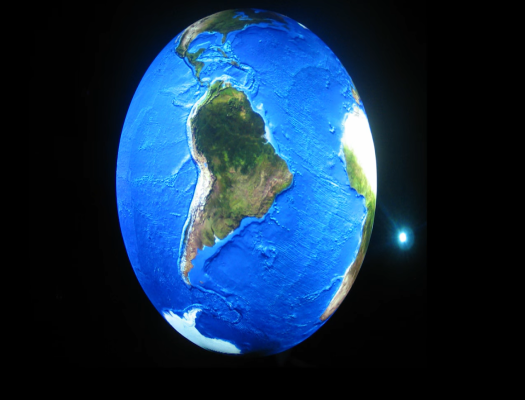
Valuing Albedo
Teachers, these mini lessons/student activities are perfect "warm up" tasks that can be used as a hook, bell ringer, exit slip, etc. They take less than a class period to complete.
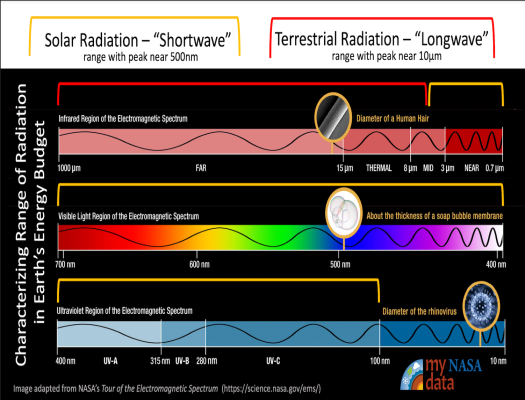
Describing Radiation in Earth’s Energy Budget
This mini-lesson may be used to support student understanding of a commonly used model of Earth’s energy budget and clarify terminology used within the context of that model.
,Teachers, these mini lessons/student activities are perfect "warm up" tasks that can be used as a hook, bell ringer, exit slip, etc. They take less than a class period to complete.
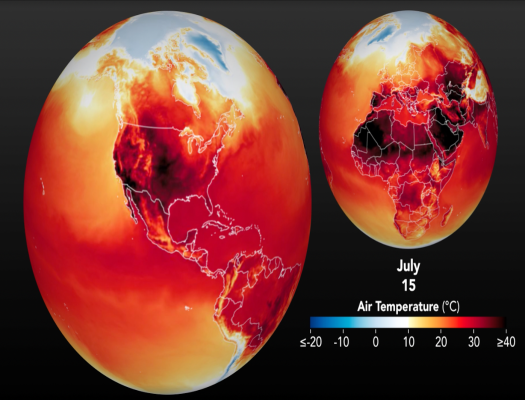
Extreme July 2022 Temperatures
This mini-lesson may be used to support student understanding of a commonly used model of Earth’s energy budget and clarify terminology used within the context of that model.
,Teachers, these mini lessons/student activities are perfect "warm up" tasks that can be used as a hook, bell ringer, exit slip, etc. They take less than a class period to complete.
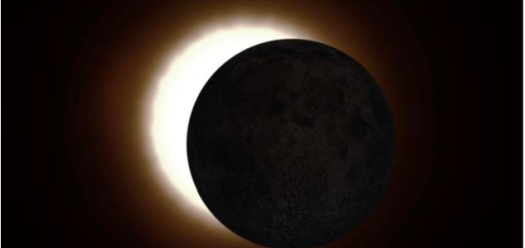
What is a Solar Eclipse?
Teachers, these mini lessons/student activities are perfect "warm up" tasks that can be used as a hook, bell ringer, exit slip, etc. They take less than a class period to complete.
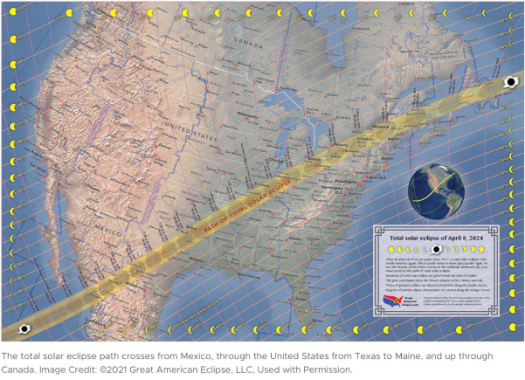
How Will Different Locations in the US Experience the 2024 Solar Eclipse?
The length of totality also depends on where on the planet’s surface the shadow falls (elevation), how far away the Moon is from Earth, and how far Earth is from the Sun at that time.
,Teachers, these mini lessons/student activities are perfect "warm up" tasks that can be used as a hook, bell ringer, exit slip, etc. They take less than a class period to complete.
How Does a Solar Eclipse Affect Air Temperature?
Teachers, these mini lessons/student activities are perfect "warm up" tasks that can be used as a hook, bell ringer, exit slip, etc. They take less than a class period to complete.
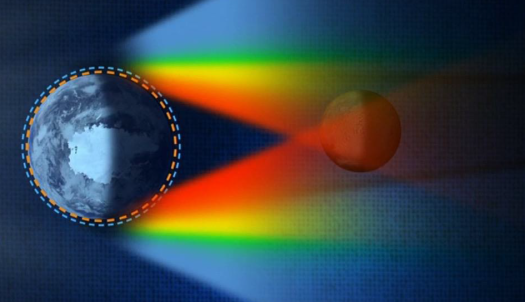
What is the Difference between a Solar Eclipse and a Lunar Eclipse?
Teachers, these mini lessons/student activities are perfect "warm up" tasks that can be used as a hook, bell ringer, exit slip, etc. They take less than a class period to complete.
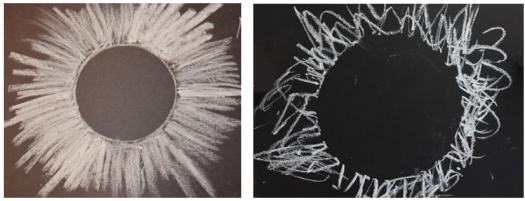
What is the Sun's Corona?
Teachers, these mini lessons/student activities are perfect "warm up" tasks that can be used as a hook, bell ringer, exit slip, etc. They take less than a class period to complete.

Aurora Bracelet
Teachers, these mini lessons/student activities are perfect "warm up" tasks that can be used as a hook, bell ringer, exit slip, etc. They take less than a class period to complete.
Aurora vs. Airglow
Teachers, these mini lessons/student activities are perfect "warm up" tasks that can be used as a hook, bell ringer, exit slip, etc. They take less than a class period to complete.

Aurora Chalk Art
Teachers, these mini lessons/student activities are perfect "warm up" tasks that can be used as a hook, bell ringer, exit slip, etc. They take less than a class period to complete.
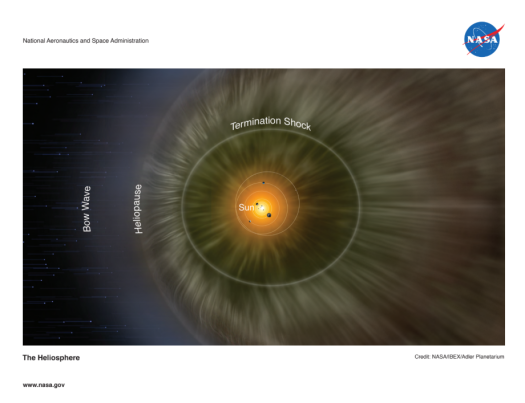
Modeling the Heliosphere
Emphasize to learners that the image on the handout is not a picture NASA took, but rather was created from real data collected by NASA missions.
Encourage learners to record observations and draw diagrams, like real scientists and engineers do.
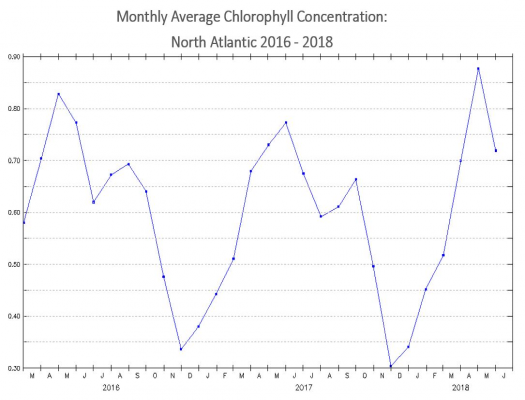
Analyzing Seasonal Phytoplankton & Energy Flow
Teachers, these mini lessons/student activities are perfect "warm up" tasks that can be used as a hook, bell ringer, exit slip, etc. They take less than a class period to complete.
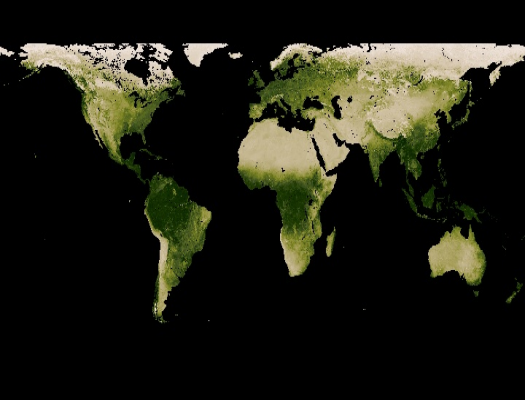
Observing Annual Vegetation Changes
Teachers, these mini lessons/student activities are perfect "warm up" tasks that can be used as a hook, bell ringer, exit slip, etc. They take less than a class period to complete.

Systems and System Models: Megadroughts in our future?
Teachers, these mini lessons/student activities are perfect "warm up" tasks that can be used as a hook, bell ringer, exit slip, etc. They take less than a class period to complete.
,

How does the Cryosphere change over the seasons?
Teachers, these mini lessons/student activities are perfect "warm up" tasks that can be used as a hook, bell ringer, exit slip, etc. They take less than a class period to complete.
,Teachers, these mini lessons/student activities are perfect "warm up" tasks that can be used as a hook, bellringer, exit slip, etc.
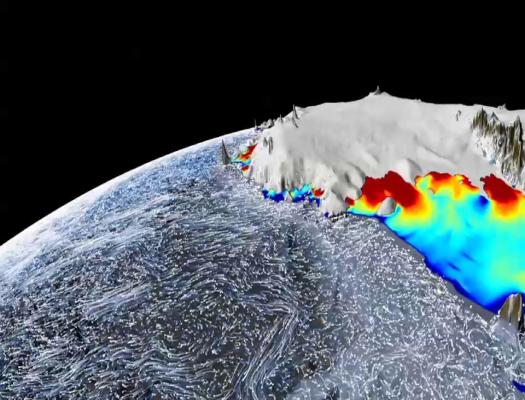
Stability and Change: Changes in Sea Ice
Teachers, these mini lessons/student activities are perfect "warm up" tasks that can be used as a hook, bell ringer, exit slip, etc. They take less than a class period to complete.
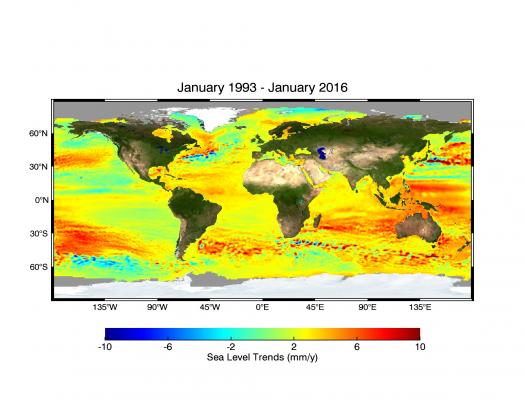
Data Jigsaw: Exploring Sea Level Rise with Others
Teachers, these mini lessons/student activities are perfect "warm up" tasks that can be used as a hook, bell ringer, exit slip, etc. They take less than a class period to complete.
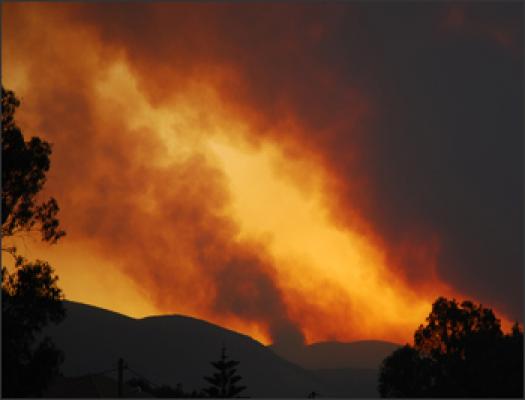
Estimating Biomass Loss from a Large Fire
Teachers, these mini lessons/student activities are perfect "warm up" tasks that can be used as a hook, bell ringer, exit slip, etc. They take less than a class period to complete.
Identifying Changes in Land Use
Teachers, these mini lessons/student activities are perfect "warm up" tasks that can be used as a hook, bell ringer, exit slip, etc. They take less than a class period to complete.

A Mini Urban Heat Island
If students cannot do day and night, this can be modified for early morning and later in the day. Other options are surfaces in direct sunlight and shadows, cloudy versus clear days or adding more surfaces.
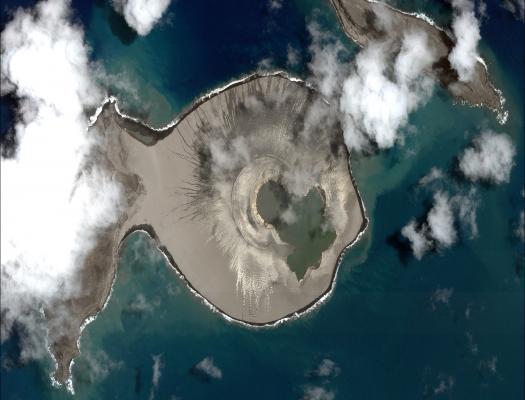
An Island Transforms through Erosion and Deposition
Teachers, these mini lessons/student activities are perfect "warm up" tasks that can be used as a hook, bell ringer, exit slip, etc. They take less than a class period to complete.
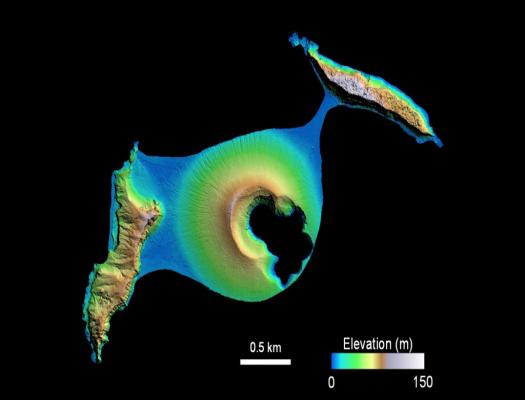
An Island Forms and Changes
Teachers, these mini lessons/student activities are perfect "warm up" tasks that can be used as a hook, bell ringer, exit slip, etc. They take less than a class period to complete.
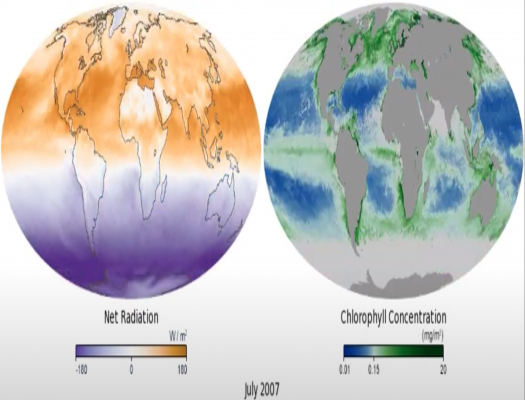
Using Models to Explore Chlorophyll and Radiation Data
Teachers, these mini lessons/student activities are perfect "warm up" tasks that can be used as a hook, bell ringer, exit slip, etc. They take less than a class period to complete.
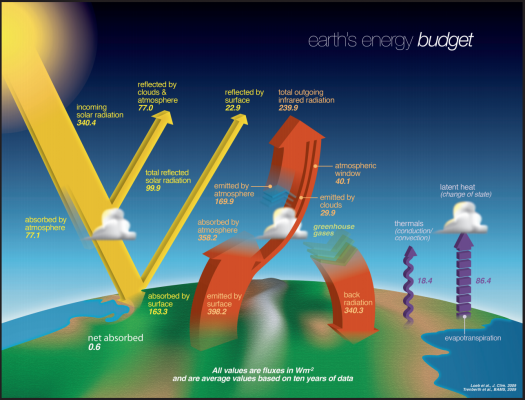
Interpreting Earth's Energy Budget
Teachers, these mini lessons/student activities are perfect "warm up" tasks that can be used as a hook, bell ringer, exit slip, etc. They take less than a class period to complete.
,Background:

Exploring Energy and Matter with Chlorophyll Data
Teachers, these mini lessons/student activities are perfect "warm up" tasks that can be used as a hook, bell ringer, exit slip, etc. They take less than a class period to complete.
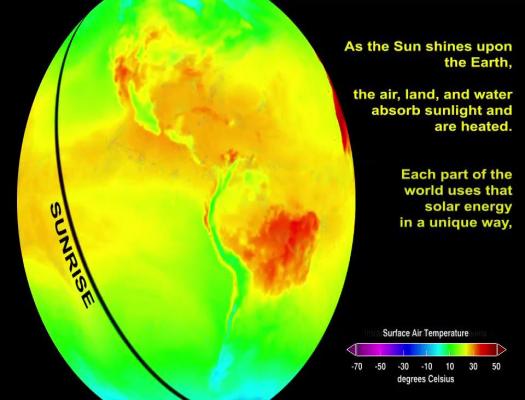
Energy and Matter: Water Cycle & The Ocean's Temperature
This is the first of a four-part series on the water cycle. The other videos are available online:
The Water Cycle: Following The Water:
https://svs.gsfc.nasa.gov/10885
Students review the NASA video showing biosphere data over the North Atlantic Ocean as a time series animation displaying a decade of phytoplankton blooms and answer questions.
Students review a video showing a global view of the top-of-atmosphere shortwave radiation from January 26 and 27, 2012 and answer the questions that follow.
Students review a visualization showing a global view of the top-of-atmosphere longwave radiation from January 26 and 27, 2012. They review the supporting text and analyze the data in the visualization to answer questions.
This NASA visualization shows sea surface salinity observations (September 2011-September 2014). Students review the video and answer questions.
Students review a video showing how the ocean is warmed by solar energy. This is the first video of a four-part series on the water cycle, which follows the journey of water from the ocean to the atmosphere, to the land, and back again to the ocean.
This mini lesson engages students in watching a NASA video related to accumulated dust that makes the trans-Atlantic journey from the Sahara Desert to the Amazon rainforest using NASA's CALIPSO satellite.






